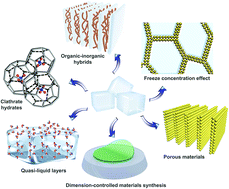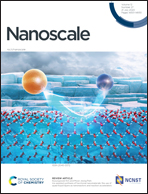Ice-assisted synthesis of functional nanomaterials: the use of quasi-liquid layers as nanoreactors and reaction accelerators
Abstract
The discovery of peculiar quasi-liquid layers on ice surfaces marks a major breakthrough in ice-related sciences, as the facile tuning of the reactions and morphologies of substances in contact with these layers make ice-assisted chemistry a low-cost, environmentally benign, and ubiquitous methodology for the synthesis of nanomaterials with improved functionality. Ice-templated synthesis of porous materials offers the appealing features of rapid self-organization and remarkable property changes arising from confinement effects and affords materials that have found a diverse range of applications such as batteries, supercapacitors, and gas separation. Moreover, much attention has been drawn to the acceleration of chemical reactions and transformations on the ice surface due to the freeze concentration effect, fast self-diffusion of surface water, and modulated surface potential energy. Some of these results are related to the accumulation of inorganic contaminants in glaciers and the blockage of natural gas pipelines. As an emerging theme in nanomaterial design, the dimension-controlled synthesis of hybrid materials with unprecedentedly enhanced properties on ice surfaces has attracted much interest. However, a deep understanding of quasi-liquid layer characteristics (and hence, the development of cutting-edge analytical technologies with high surface sensitivity) is required to achieve the current goal of ice-assisted chemistry, namely the preparation of tailor-made materials with the desired properties.

- This article is part of the themed collections: 2020 Nanoscale HOT Article Collection and Recent Review Articles


 Please wait while we load your content...
Please wait while we load your content...